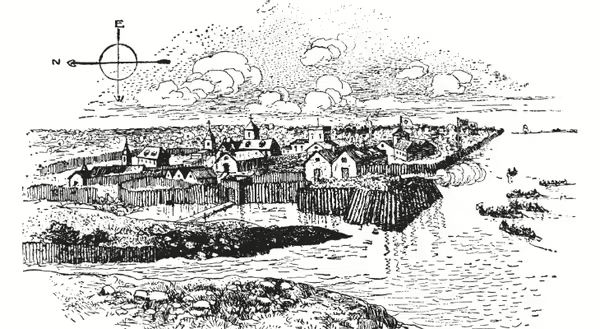
We have all heard the story of the Pilgrims landing at Plymouth Rock in 1620 and the harsh conditions endured during the winter. The following year, they learned, with the help of indigenous people, how to survive at this location. We probably also relate what they went through to what we see and experience now with weather. Winters, however, were quite a bit different in the 1600s.
The Little Ice Age
From about 1400 to about 1850, this was a period of cooling known as the Little Ice Age. There are several theories on the cause of this cooling, such as multiple massive volcanic eruptions, changes in atmospheric regional air pressure systems, decreases in solar output, or a combination of all three. Northern Europe had many harsh winters during this time, which caused much hardship to those living in that area.
Making the most of the cold
In rare cases, it was cold enough to freeze the Thames River in England, including the winter of 1608-09. When this occurred, the residents of London would have what was known as a Frost Fair. Vendors and ice skaters would use the ice as space for making the best of the situation. Many games would be played as well.
This colder weather is what those in England and the rest of Northern Europe would have been experiencing in the early 1600s. The Pilgrims lived in the Netherlands for about 10 years before deciding to get approval from English authorities to go to the New World. We have evidence of what that area was like there during that time from the many paintings of people using frozen rivers and lakes for winter activities. Many of these lakes today have not frozen completely for decades, and some rivers haven’t frozen for an even longer time.
Making the move
The voyage of the Pilgrims made on the Mayflower was not idyllic. The boat was tossed around by North Atlantic storms. When they arrived at Plymouth Rock in what is now Massachusetts, it was much farther north than they originally intended to be, and it was already mid-December. They had to survive the winter with what they had and what little they could get. It is believed the weather may have been harshly cold when they arrived but was wetter and less harsh during the latter part of the season. However, remember, winters were much colder in general than we experience today. They would have had to build shelters and try to keep warm when it was already cold. Many perished that first winter due to the conditions.
More cold weather to content with
Others that came to North America in the 1600-1700s would still feel the effects of the Little Ice Age, which didn’t fade away until the early 1800s. Near the end of this period, in 1815, a huge volcanic eruption, Tambora, added to the cold conditions and made the following summer so cold that crops failed in much of North America, northern Europe, and Asia, causing additional hardship and famine.
In case you’re wondering about climate fluctuations
This is off topic, but I know some may be asking about current climate trends and effects caused by the current solar maximum. This only adds about one tenth of a degree to earth’s warming, and we’ve already warmed well over 2 degrees in the last hundred years. The solar maximum also only lasts for a few years, when solar activity will again lower through its 11-year cycle.